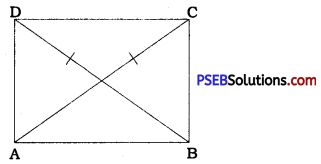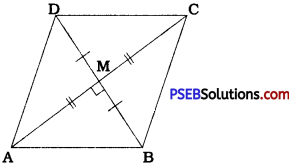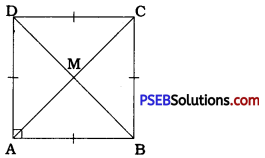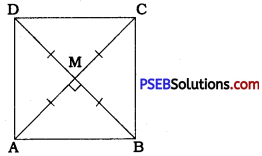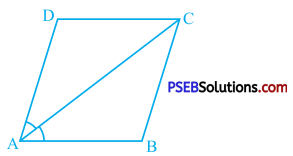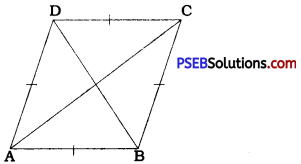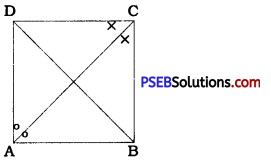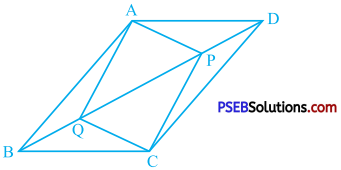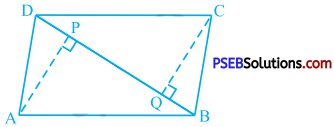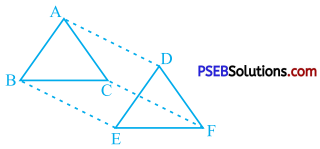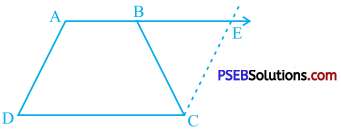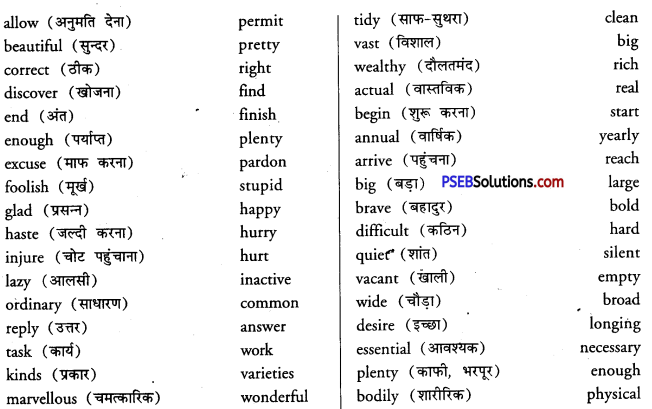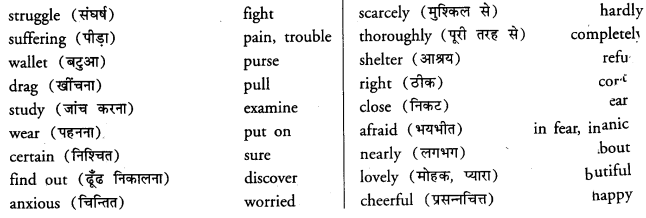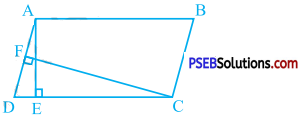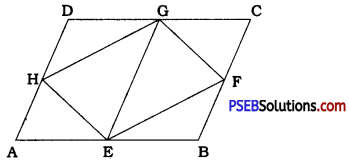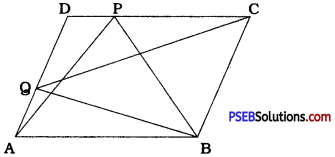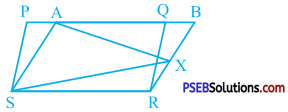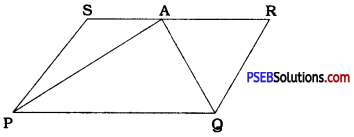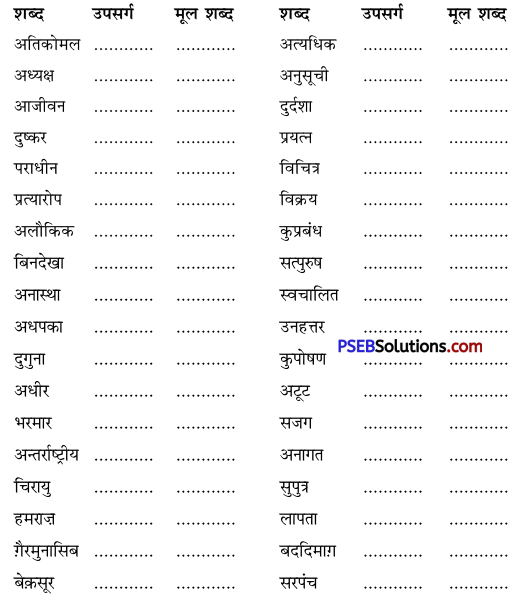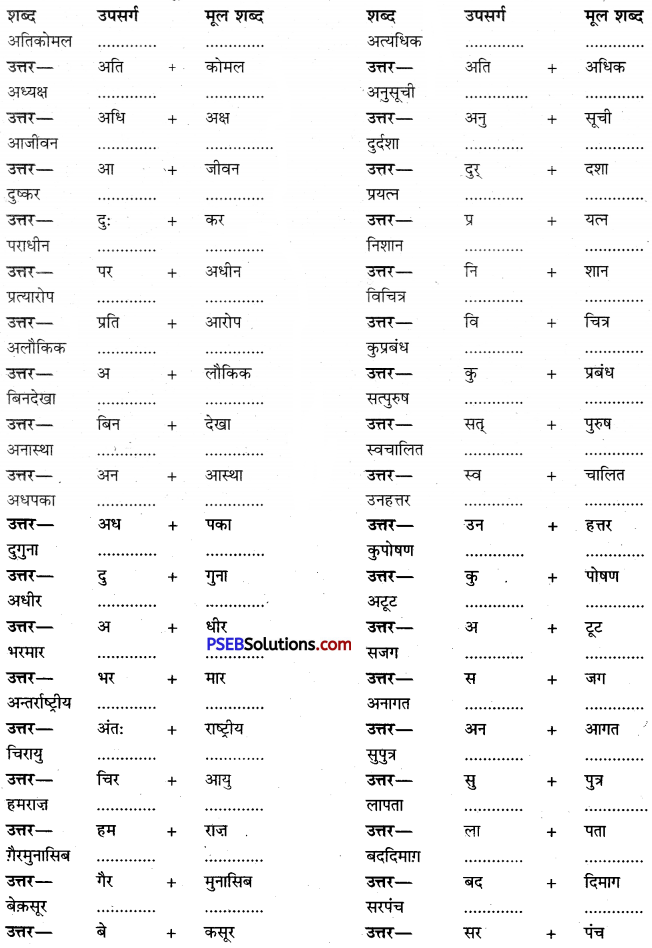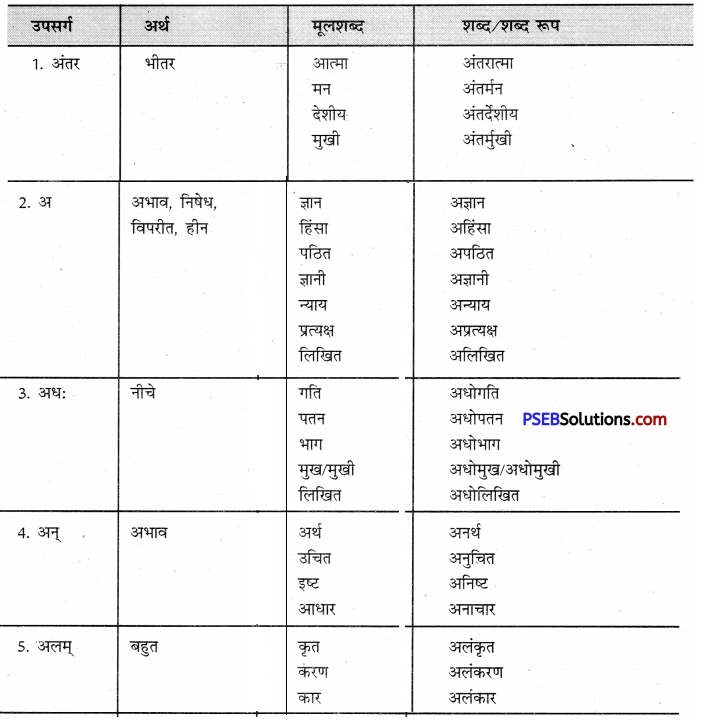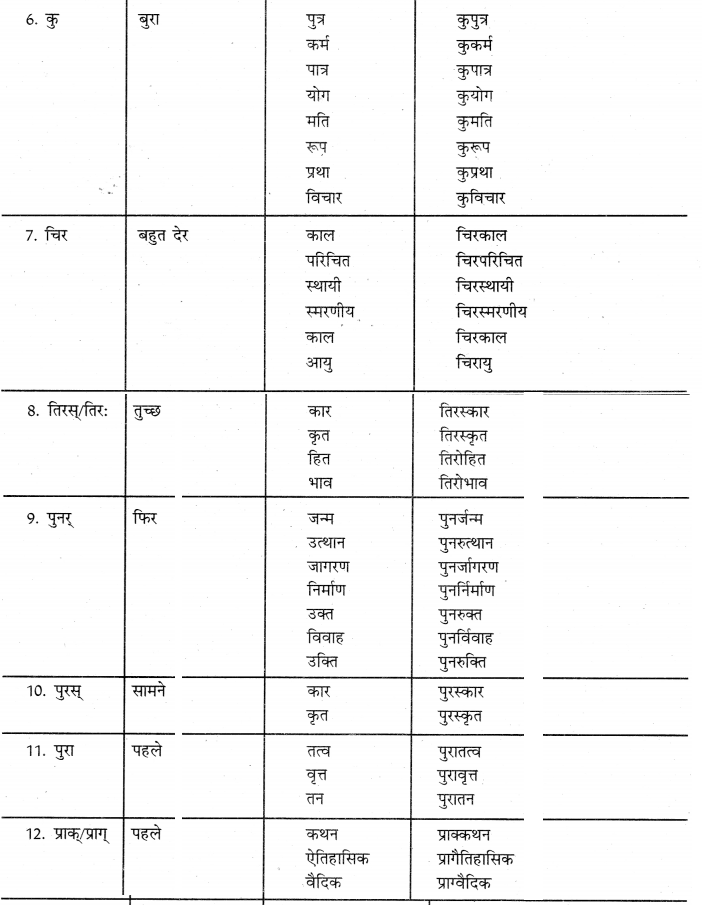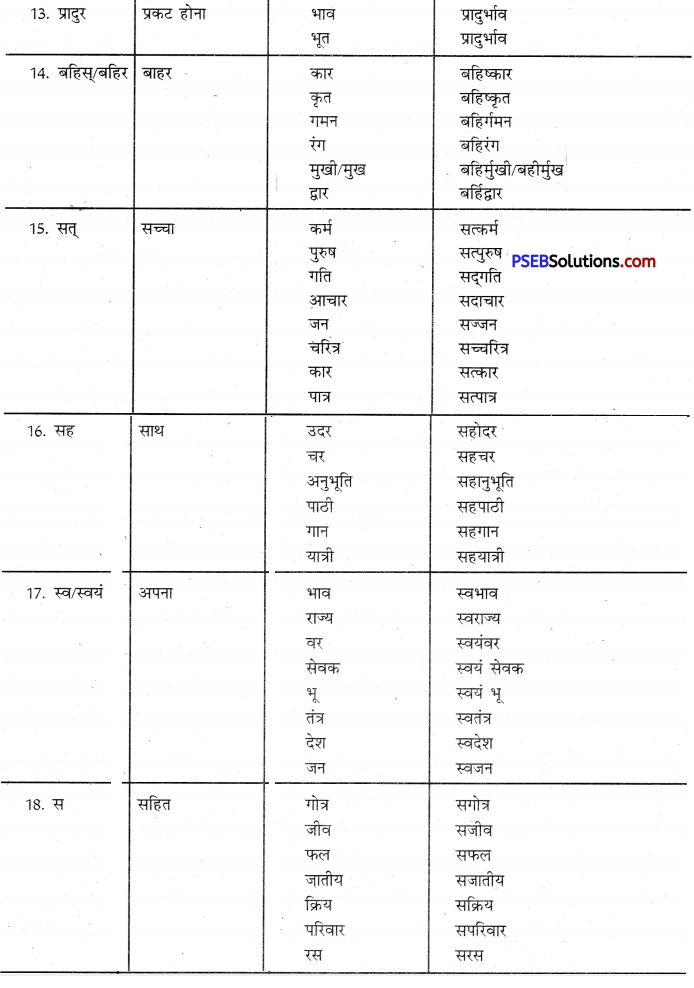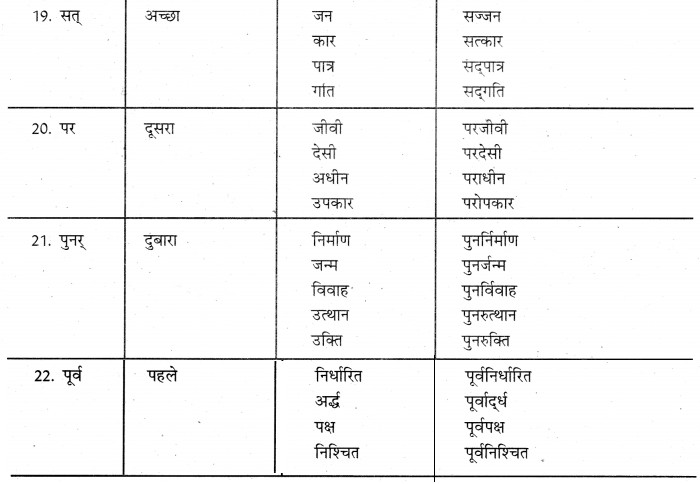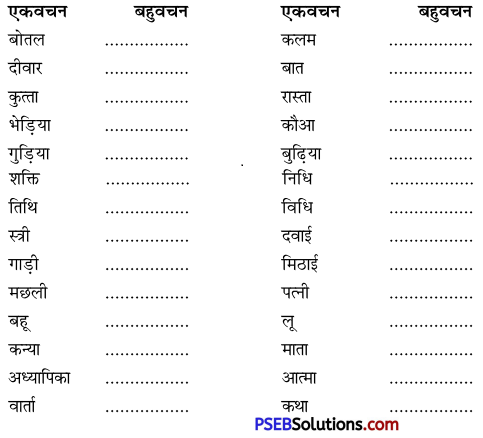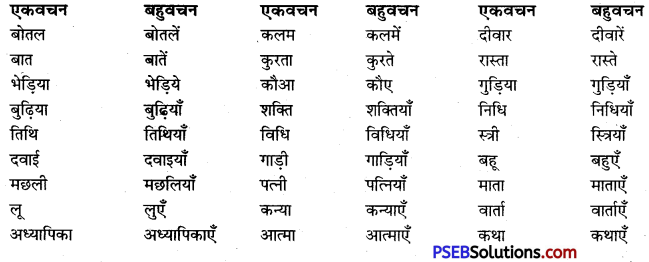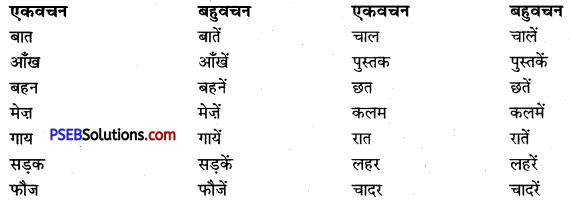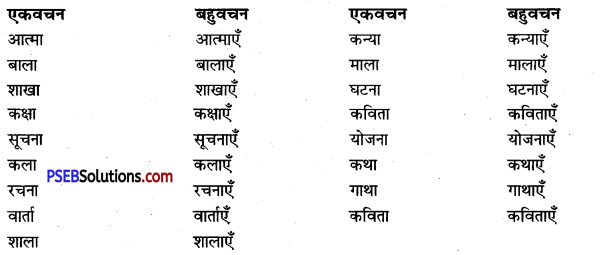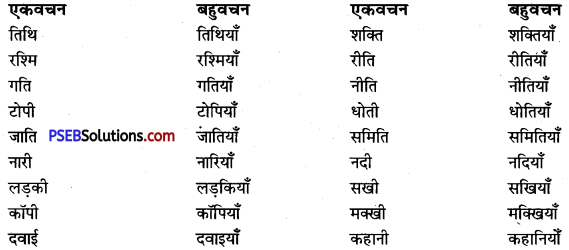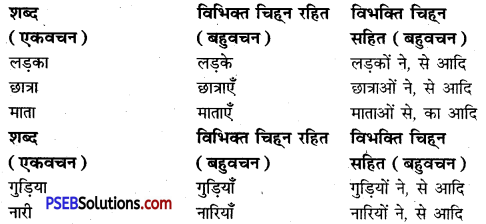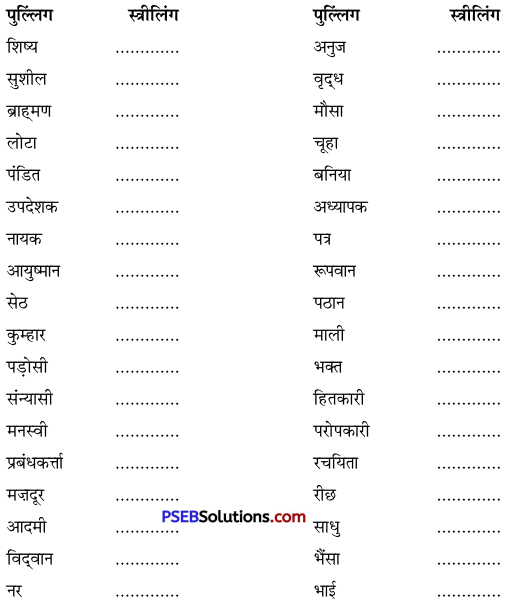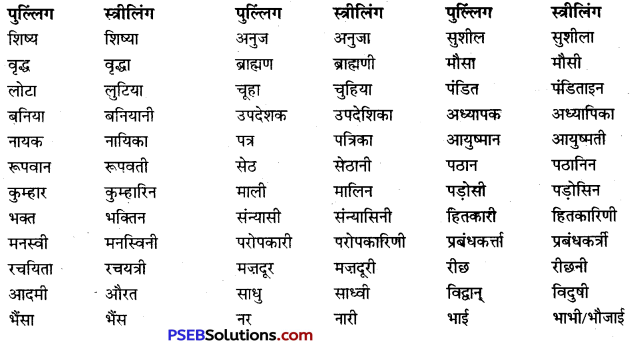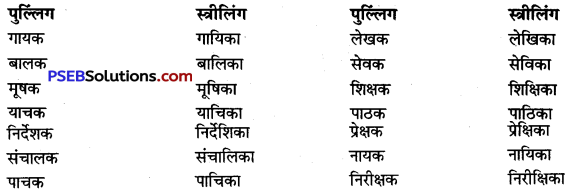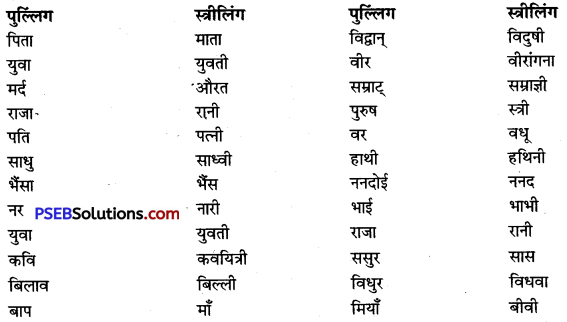Punjab State Board PSEB 9th Class English Book Solutions English Grammar Non-Finites Exercise Questions and Answers, Notes.
PSEB 9th Class English Grammar Non-Finites
(a) Fill up the blanks, selecting suitable to-infinitives from the following list :
(to see, to implement, to do, to announce, to show, to join, to let, to waste, to play, to do, to go, to solve, to post, to ask, to remember)
1. It is time ………………
2. That was a sight …..
3. The judge has a judgement ………
4. That is something ………………..
5. I have a new plan ……………
6. I have a nice picture ……….
7. Have you any plan ……………… the college ?
8. I have some questions ……………… you.
9. Have you any work ……………. ?
10. I have a house 11. She has no problem ………………
12. I have no time …………….
13. Do you have any letters …………..
14. He has some homework …………..
15. Bedi has a match ……………… on Sunday.
Answer:
1. to go
2. to see
3. to announce
4. to remember
5. to implement
6. to show
7. to join
8. to ask
9. to do
10. to let
11. to solve
12. to waste
13. to post
14. to do
15. to play.
![]()
(b) Frame seven meaningful sentences from the table below :
| I have | some letters some homework some good news a question some pictures a match no time |
to ask you to waste to play on Sunday to show you to do to tell you to post |
1. I have some letters to post.
2. I have some homework to do.
3. I have some good news to tell you.
4. I have a question to ask you.
5. I have some pictures to show you.
6. I have a match to play on Sunday.
7. I have no time to waste.
Fill up the blanks with the Present Participle form of the following Verbs :
(a) (smoke, look, spit, swim, read, wait, go, read, eat, see)
1. …………… is a very good exercise.
2. No …………….. in this compartment.
3. ……………. French is easier than to speak it.
4. ………….. after children requires patience.
5. ………….. between meals is bad.
6. No ……………….
7. He insisted on ……………. her.
8. I am quite used to ……………… in queues.
9. Do you feel like …………….. for a swim ?
10. I am looking forward to ……………… that book.
Answer:
1. Swimming
2. smoking
3. Reading
4. Looking
5. Eating
6. spitting
7. seeing
8. waiting
9. going
10. reading.
![]()
(b) (travel, talk, work, walk, ride, see, wait, steal, drop, smoke, cut)
1. He is used to …………….. at night.
2. Try to avoid ……………. in the rush hour.
3. There’s nothing here worth ………….
4. Stop ……..
5. Would you mind ……………… a moment ?
6. He prefers …………….. to …………
7. The grass needs …………..
8. I don’t allow ……………… here.
9. I heard the cork ………..
10. I caught him ……………… my apples.
Answer:
1. working
2. travelling
3. seeing
4. talking
5. waiting
6. walking, riding
7. cutting
8. smoking
9. dropping
10. stealing.
Put the – ing forms (Participles) of the following Verbs in the blanks in the following sentences :
(please, write, rise, run, tire, drip, bore, work, grow, amuse.)
1. I caught a …………….. dog.
2. It was a ……………… sight.
3. We had a …………….. journey.
4. Give him a …………… pad.
5. …………… crops need care.
6. I do not like ……………… taps.
7. Did you see the …………….. flames ?
8. It was a ……………….. play.
9. We had an ……………… talk.
10. The government is looking after the …………… classes.
Answer:
1. running
2. pleasing
3. tiring
4. writing
5. Growing
6. dripping
7. rising
8. boring
9. amusing
10. working.
Given below are some pairs of sentences. Combine them into single sentences, using the Participle Phrases :
1. I saw a thief.
He was running away towards the station.
2. You can see the child.
She is sleeping peacefully.
3. His brother came home.
He brought an English wife with him.
4. Kindly give something to the poor beggar.
He is crying for alms.
5. The prince slept soundly.
He dreamt of his bright future.
6. My father came back home.
He brought some fruit for use.
7. Ram killed the witness.
He was giving a statement.
8. A police officer came to my house today.
He brought my missing bicycle with him.
9. I can hear my son.
He is saying prayers.
![]()
10. Could you bring me a pen ?
It is lying on the shelf.
Answers
1. I saw a thief running away towards the station.
2. You can see the child sleeping peacefully.
3. His brother came home bringing an English wife with him.
4. Kindly give something to the poor crying beggar.
5. The prince slept soundly dreaming of his bright future.
6. My father came back home bringing some fruit for use.
7. Ram killed the witness giving a statement.
8. A police officer came to my house today bringing my missing bicycle with him.
9. I can hear my son saying prayers.
10. Could you bring me a pen lying on the shelf?
Fill in the blanks with correct Past Participle form of the given verbs :
(wound, cook, burn, break, write, build, rot, lose, unlock, fade, close, paint, translate, finish, fail)
1. I got my house ……………
2. He got the book …………
3. The …………… soldier was taken to the hospital.
4. The overseer is getting this house ……..
5. The ……………… rose was thrown out.
6. You must get the room ……………..
7. The …………….. food got spoilt.
8. Give a ……………… statement.
9. A ……………. child dreads the fire.
10. This college does not admit ……….. students.
11. He died of a …………….. heart.
12. The officer wants this work ………….. by today.
13. Who likes ……………. vegetables ?
14. That lady found her ……………… purse.
15. I found all the doors
Answer:
1. built
2. translated
3. wounded
4. unlocked
5. faded
6. painted
7. cooked
8. written
9. burnt
10. failed
11. broken
12. finished
13. rotten
14. lost
15. closed.
Combine the following sentences, using Participles or Gerunds or Infinitives :
1. I made a journey to Mumbai yesterday. I went there to get the best financial advice.
2. Your parcel never reached me. It had been addressed to the wrong place.
3. Turn to the right. You will find the office.
4. He drew his sword. He rushed at the king.
5. It was my purse. It had been lost.
6. He made a promise. He kept it also.
7. One must serve twenty years. After that one can retire.
8. He said he would come today. I was pleased at this.
9. I promise to help you in time of need. You can rely on this.
10. She was praised by all. She grew proud.
Answer:
1. I made a journey to Mumbai to get the best financial advice.
2. Having been addressed to the wrong place, your parcel never reached me.
3. Turning to the right, you will find the office.
4. Drawing his sword he rushed at the king.
5. It was my lost purse.
6. Having made a promise he kept it also.
7. After serving for twenty years one can retire.
8. I was pleased to hear of his coming today.
9. You can rely on my promise to help you in times of need.
10. Being praised by all, she grew proud.
![]()
The Infinitive
क्रिया के मूल रूप को Infinitive कहा जाता है। इस पर कर्ता के Number और Person का कोई प्रभाव नहीं होता है।
Infinitive दो प्रकार के होते हैं :
Bare Infinitive : यह क्रिया का वह मूल रूप होता है जिसके साथ to नहीं लगता है।
I saw her weep. — We made her sing.
To-Infinitive : यह क्रिया का वह मूल रूप होता है जिसके साथ to लगा होता है।
I want to go now. — We have to pay taxes.
The Use of Bare-Infinitive
Bare-Infinitive का प्रयोग निम्नलिखित हालतों में किया जाता है :
1. निम्नलिखित सहायक क्रथाओ के बाद
do, does, did, can, could, will, would, shall, should, may, might, need, must, dare.
1. I shall accompany you.
2. He may come today.
3. You need not do it.
2. निम्नलिखित सकर्मत (Transitive) कियाओं के बाद :
make, let, bid, feel, hear, see, watch, notice, observe, if I
1. ‘I heard him go up the stairs.
2. I saw him steal my pen.
3. I felt the cold air strike against my face.
4. He made her weep every day.
3. had और would वाले निम्नालिखित phrases के बाद :
had better, had rather, would rather, had sooner, would sooner.
1. I would rather die than beg.
2. You had better stop smoking.
4. than (conjunction) it but (preposition) etc are :
1. I would rather walk than ride your scooter.
2. He did nothing but laugh.
नोट : but के बाद ‘bare-infinitive’ का प्रयोग केवल तभी किया जाता है जब but से पूर्व मुख्य क्रिया के रूप में do, does, did का प्रयोग किया गया हो।
The Use of To-Infinitive.
To-infinitive का प्रयोग निम्नलिखित हालतों में किया जाता है :
1. ought और have के साथ to-infinitive का प्रयोग किया जाता है यदि इन शब्दों का प्रयोग किसी जिम्मेदारी (obligation) अथवा कर्त्तव्य को प्रकट करने के लिए किया गया हो।
1. You ought to respect your elders.
2. We ought to help the poor.
3. I have to support my family.
4. She has to live with her parents.
5. Boys had to pay their fees.
2. किसी कारण अथवा उद्देश्या के प्रकट करने के लिए भी to-invinitive का प्रयोग किया जाता ह
1. She came here to consult you.
2. I went to Delhi to meet my brother.
3. They stopped at the market to buy some apples.
4. We did not go there to earn money.
निम्नलिखित क्रियाओं के साथ to-infinitive लगाया जाता है यदि उनका प्रयोग किसी मनोरथ, इच्छा अथवा तत्परता को प्रकट करने के लिए किया गया हो :
want, hope, like, love, hate, promise, intend, propose, decide, swear, learn, remember, forget, agree, consent, neglect, refuse, attempt, fail, hesitate, prepare, care, pretend, determine, arrange, seem.
1. I want to go now.
2. She decided to marry him.
3. I forgot to answer this question.
4. They promised to pay all the taxes.
![]()
निम्नलिखित सकर्मक क्रियाओं के साथ कर्म (object) लगाने के बाद to-infinitive का प्रयोग किया जाता है :
ask, advise, allow, beg, compel, courage, force, instruct, invite, order, permit, request, tell, teach, warn, Bici
1. I begged him to help me.
2. My mother asked me to work hard.
3. The teacher allowed him to go.
4. The boys requested the teacher to forgive them.
Fill in the blanks with the correct form of the verbs given in brackets :
1. Mohan wants ………………. (swim) in the river.
2. The teacher asked him ……………….. (get) out of the room.
3. I forgot ……………….. (bring) my purse.
4. Let him ……………….. (go) now.
5. I have come ……………….. (see) the Principal.
6. It began ……………….. (rain) and we couldn’t go out.
7. We saw him ……………. (arrive) at the station.
8. The book was easy …………….. (read).
9. We didn’t expect Ram …………. (win).
10. They heard her ………………. (sing) a sweet song.
11. Mohan knows how ……………….. (answer) this question.
12. He was too tired ……………….. (walk).
13. He made me …………….. (do) it.
14. They stopped ……………… (have) some rest.
15. He is saving money ………….. (buy) a scooter.
16. Would you like …….. (have) dinner with us?
The Gerund
-ing प्रत्यय वाली ऐसी क्रिया जो Noun का काम कर रही हो उसे Gerund कहा जाता है। इसका प्रयोग निम्नलिखित स्थितियों में किया जा सकता है :
| 1. Subject to a Verb | 1. Swimming improves one’s health. 2. Smoking causes cancer. |
| 2. Object to a Verb | 1. I dislike smoking. 2. I love swimming. |
| 3. Object to a Preposition | 1. He is fond of playing. 2. She was fined for coming late. |
| 4. Complement to a Linking Verb | 1. His only aim was cheating. 2. My favourite hobby is gardening. |
| 5. In apposition to a Pronoun | 1. It is no use crying. 2. It is foolish saying that. |
Gerunds के प्रयोग के सम्बन्ध में ध्यान रखने योग्य बातें :
1. निम्नलिखित क्रियाओं के साथ कर्म (object) के रूप में to-infinitive तथा gerund में से किसी का भी प्रयोग किया जा सकता है।
advise, allow, attempt, begin, continue, hate, intend, learn, like, love, remember, start.
| To-infinitive | Gerund |
| 1. He intends to live here. 2. I love to hear this song. 3. I remembered to see him. 4. We prefer to travel by air. 5. He continued to write letters. |
1. He intends living here. 2. Move hearing this song. 3. I remembered seeing him. 4. We prefer travelling by air. 5. He continued writing letters. |
2. अनुभूति सम्बन्धी निम्नलिखित क्रियाओं के साथ bare-infinitive अथवा gerund में से किसी का भी प्रयोग किया जा सकता है :
feel, hear, notice, observe, see, watch.
| Bare-Infinitive | Gerund |
| 1. I heard her come in. 2. She saw me cross the road. 3. I heard you shout in the class. |
1. I heard her coming in. 2. She saw me crossing the road. 3. I heard you shouting in the class. |
3. निम्नलिखित क्रियाओं के साथ केवल gerund का ही प्रयोग किया जा सकता है। इनके साथ infinitive का प्रयोग कभी नहीं किया ‘
जाना चाहिए।
avoid, delay, deny, dislike, enjoy, finish, forget, imagine, keep (जारी रखना), mind (बुरा मनाना), pardon, postpone, risk, stop, suggest, try (परखना), understand.
4. निम्नलिखित क्रियाओं के साथ भी gerund का ही प्रयोग किया जाता है :
be worth, can’t bear, be no use, can’t stand, be no good, can’t help.
1. This table is worth buying.
2. It is no use crying over spilt milk.
3. It is no good imitating others.
4. She can’t bear living away from her children.
5. I can’t stand smoking in my room.
6. We couldn’t help laughing at him.
![]()
5. यदि किसी gerund से पूर्व कोई संज्ञा अथवा सर्वनाम लगा हो, तो यह अवश्य ही सम्बन्धवाचक रूप में होना चाहिए, जैसे
1. I dislike Mohan’s coming late daily.
2. Your father depends on your working hard.
3. Do you mind my smoking here?
Fill in the blanks with the correct form of the given verbs (Gerund or Infinitive) :
1. I don’t mind …………. (give) my book to you.
2. My father has stopped ………… (talk) to him.
3. We enjoyed …………… (swim) in the river.
4. She likes …………. (walk) in her garden.
5. He has given up …………. (smoke).
6. The tailor has completed ………….. (sew) the shirt.
7. He refused ………….. (accept) my advice.
8. When the bell rang, the students came
9. I decided ………. (see) the Principal.
10. She offered …………… (bring) flowers for me.
11. I want …………… (play) cricket.
12. Do you really enjoy …………. (play) football ?
13. My father can’t afford ………….. (buy) a T.V. set.
14. They will not permit you …………… (talk) in the library.
15. I advised my brother ………….. (work) hard for the test.
The participle
क्रिया के जिस रूप में Verb तथा Adjective दोनों के ही गुण हों, उसे Participle कहा जाता है। Participle तीन प्रकार के होते हैं :
| Present Participle | Past Participle | Perfect Participle |
| Drowning | Drowned | Having drowned |
| Seeing | Seen | Having seen |
| Finishing | Finished | Having finished |
1. Present Participle के कुछ उदाहरण
- A drowning man catches at a straw.
- The results were encouraging.
- Taking a walking stick, the old lady came out of the cottage.
- Seeing the police, the thief ran away.
- Naresh went into the bathroom singing.
2. Past Participle के कुछ उदाहरण
- His spoken English is much better than yours.
- These solved papers are very helpful.
- I boarded a crowded bus.
- I saw a faded rose.
3. Perfect Participle के कुछ उदाहरण
- Having bought a book, I came back from the market.
- Having done his homework, John went out to play.
- Having attended a meeting of the club, I came back.
- Having won a prize, Neelu felt happy.
4. Participle Phrases के कुछ उदाहरण
याद रखिए कि
(1) जब कोई क्रिया वाक्य की मुख्य क्रिया के समय पर ही हो रही हो तो उसके लिए Present Participle (V1-ing) का प्रयोग किया जाना चाहिए :
I looked through some old papers and came across this letter.
= Looking through some old papers, I came across this letter.
The students saw the Headmaster and they stopped talking.
= Seeing the Headmaster, the students stopped talking.
![]()
(2) जब कोई क्रिया वाक्य की मुख्य क्रिया से पहले हो चुकी हो, तो उसके लिए Past Participle (having + V3) का प्रयोग किया जाता है :
I met my friend and went back with him to his house.
= Having met my friend, I went back with him to his house.
The match ended and the spectators went away.
= The match having ended, the spectators went away.
Fill in the blanks with the correct non-finite form (Infinitive, Gerund or Participle) of the verbs given in the brackets :
1. The rice will grow well in the ………… (come) rains.
2. We heard of his ………… (come) back today.
3. We hope …………… (see) him back soon.
4. …………… (Believe) him to be right, I trusted him.
5. Night ………….. (come) on, the men went home.
6. Did you hear of his ………. (win) a prize ?
7. I am tired of …………. (do) this work.
8. Generally ……… (speak), we get what we deserve.
9. We saw him …………( leave) the house.
10. I was very happy ………… (see) you.
11. I shall be glad …….. (help) you.
12. My wife ……………… (expect) my return, did not leave the house.
13. ………….. (Spelt) is more difficult than …………. (write).
14. I am …………… (blame), not you.
15. The coach made us … (run).
Miscellaneous Sentences For Practice
Use the proper form of Non-finites in the following sentences
I.
1. ………………. (Teach) correct English needs great care.
2. People assembled ………………. (hear) the Minister.
3. I saw him ………………. (leave) his house.
4. Some people love ……………….(climb) mountains.
5 ……………….(Walk) is a good exercise.
6. It is easy ………………. (advise) others.
7. People worship the ………………. (rise) sun.
8. I made him ………………. (laugh).
9. A ………………. (drown) man catches at a straw.
10. I intend ……………….(spend) my vacation with my uncle.
II.
1. We are busy ………………. (pack).
2. He refused ………………. (obey) me orders.
3. I hope ………………. (succeed) in my plans.
4. The ………………. (steal) money did not last long.
5. He insisted on ………………. (see) him.
6. These days it is not easy ………………. (get) a job.
7. We were too ……………….(tire) to work.
8. I enjoy ………………. (piny) with small children.
9. ………………. (Smoke) is injurious to health.
10. She agreed ………………. (marry) the poor shepherd.
![]()
III.
1. They all heard him ………………. (sing).
2. The runner is ………………. (exhaust).
3. It is no use ………………. (wait) here now.
4. Are you interested in ………………. (paint) ?
5. Dogs are not allowed ………………. (enter) the garden.
6. ………………. (Swim) is a good exercise.
7. I heard him ………………. (cry) for help. .
8. Are you interested in ………………. (boat) ?
9. She was too tired ………………. (walk).
10. No ………………. (park) here.
IV.
1. I wonder why he avoids ………………. (meet) me.
2. It is no use ………………. (argue) with him.
3. I made him ………………. (feel!) sorry.
4. ………………. (Drink) ruins our health.
5. I don’t mind ………………. (wait).
6. He did not let me ………………. (play) in his garden.
7. I hope ………………. (get) first division in the examination.
8. I don’t want ………………. (swim) in the river.
9. I enjoy ………………. (sing) patriotic songs.
V.
1. His story made the listeners ………………. (weep).
2. Dancing is difficult ………………. (learn).
3. We enjoyed ………………. (boat) in the lake.
4. I saw the ball ………………. (roll) into the well.
5. We are looking forward to ………………. (see) her.
6. He used ………………. (smoke) in his youth.
7. How dare you ………………. (talk) like that ?
8. They found her ………………. (sleep).
9. They made her ………………. (sing) a song.
10. She refused ………………. (help).
